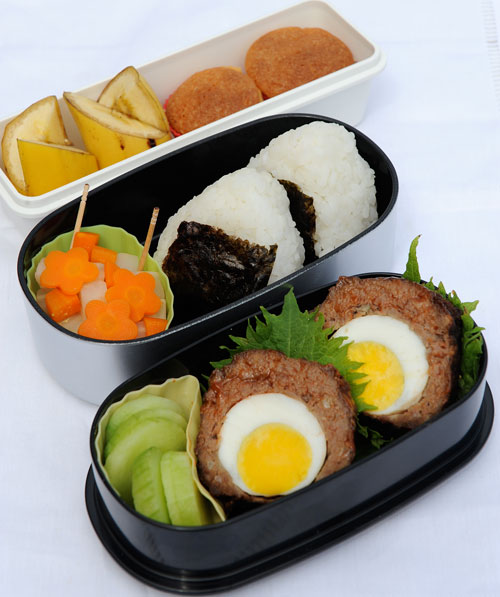
First off, I haven't actually uploaded a complete bento here in ages, so here is one! It features Japanese Scotch eggs, which you see in the near-most box. (The rest of the bento consists of cucumber slices with sea salt; a carrot and celeriac salad; onigiri with umeboshi filling; banana and mini-cupcakes. The whole bento is about 1100 calories - I intended it to be for 2, but ended up eating the whole thing by myself!)
The original Scotch egg is a British pub snack, made by wrapping a hardboiled egg in sausage meat and deep frying it. The Japanese version uses a ground beef/pork meat mix, and is either deep fried, panfried or baked in the oven. I usually bake them or panfry them, though deep frying is best if you want perfectly round Scotch eggs.
Japanese style Scotch egg is considered to be rather retro in Japan these days. They are typical of yohshoku or youshoku, Japanese-style Western cooking, where foods from the West have been adapted (mostly in the post-WWII period up to the 1970s or so) to suit Japanese tastes and available ingredients. (More about yohshoku.)
I rather hesitated to post this recipe since it doesn't quite fit the usual criteria for recipes here. It takes some time and effort to make, so it's not practical for a busy morning. It's not very low in calories. And, it doesn't really freeze well, because frozen hard boiled egg turns rubbery and hard, so it's not even a good make-ahead staple item! Other than that though, it is quite delicious at room temperature, so very well suited for bentos. You can make a few and keep them in the refrigerator for 3-4 days. Or make them for dinner and leave one for next day's bento! That bright yellow and white egg against the brown of the meat is very cheery.